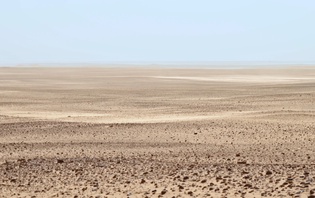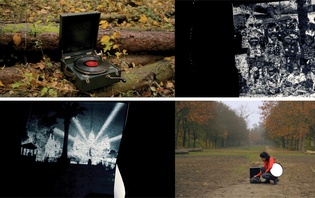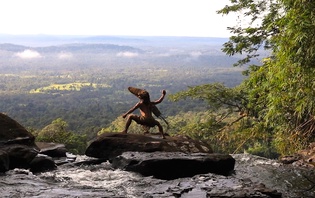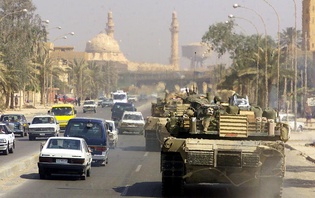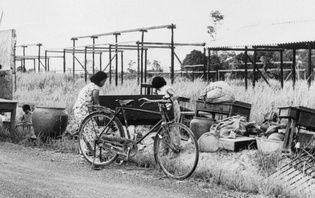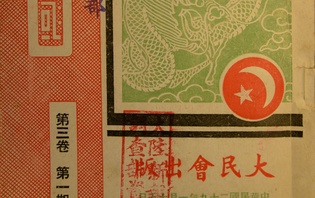The Malayan Emergency: Bibliography
This bibliography provides details about publications in English relating to all aspects of the Malayan Emergency, as well as details about important archival and library collections.
Historiographical Overviews
Hack, Karl. “‘Iron Claws on Malaya’: The Historiography of the Malayan Emergency”, Journal of Southeast Asian Studies 30, no. 1 (March 1999): 99-125.
Keo, Bernard Z. “A Small, Distant War? Historiographical Reflections on the Malayan Emergency”, History Compass 17, no. 3 (March 2019).
Books
Arditti, Roger C. Counterinsurgency Intelligence and the Emergency in Malaya. Cham: Palgrave Macmillan, 2019.
Barber, Noel. The War of the Runnings Dogs: How Malaya Defeated the Communist Guerrillas 1948-1960. London: Cassell, 1971.
Bartlett, Vernon. Report from Malaya. London: D. Verschoyle, 1955.
Bayly, Christopher, and Tim Harper. Forgotten Wars: The End of Britain’s Asian Empire. London: Allen Lane, 2007.
Belogurova, Anna. The Nanyang Revolution: The Comintern and Chinese Networks in Southeast Asia, 1890-1957. Cambridge: Cambridge University Press, 2019.
Carruthers, Susan L. Winning Hearts and Minds: British Governments, the Media, and Colonial Counter-Insurgency, 1944-1960. London: Leicester University Press, 1995.
Cheah Boon Kheng. Masked Comrades: A Study of the Communist United Front in Malaya, 1945-1948. Singapore: Times, 1979.
Cheah Boon Kheng. Malaysia: The Making of a Nation. Singapore: Institute of Southeast Asian Studies, 2002.
Chin, C.C., and Karl Hack, eds. Dialogues with Chin Peng: New Light on the Malayan Communist Party. Singapore: Singapore University Press, 2004.
Chin Peng. My Side of History. Singapore: Media Masters, 2003.
Cloake, John. Templer: Tiger of Malaya. London: Harrap, 1985.
Clutterbuck, Richard L. The Long Long War: The Emergency in Malaya 1948-1960 (London: Cassell, 1967.
Clutterbuck, Richard L. Riot and Revolution in Singapore and Malaya, 1945-1963. London: Faber, 1973.
Coates, John. Suppressing Insurgency: An Analysis of the Malayan Emergency. Boulder, CO: Westview, 1993.
Comber, Leon. Malaya’s Secret Police 1945-60: The Role of the Special Branch in the Malayan Emergency. Singapore: Institute of Southeast Asian Studies, 2008.
Comber, Leon. Templer and the Road to Malayan Independence: The Man and His Time. Singapore: ISEAS Publishing, 2015.
Cormac, Rory. Confronting the Colonies: British Intelligence and Counterinsurgency. Oxford: Oxford University Press, 2013.
Corry, W.C.S. A General Survey of New Villages: Report to His Excellency Sir Donald MacGillivray, High Commissioner of the Federation of Malaya. Kuala Lumpur: Government Printing Press, 1954.
Fakeh, Shamsiah. The Memoirs of Fakeh, Shamsiah: From AWAS to 10th Regiment. Kuala Lumpur: Strategic Information and Research Development Centre, 2009.
Francis Kok Wah Loh. Beyond the Tin Mines: Coolies, Squatters, and New Villagers in the Kinta Valley, Malaysia 1880–1980. Oxford: Oxford University Press, 1988.
Giukon, Asoka. A People’s History of Malaya: The New Emergency. Oldham: Bersatu, 1980.
Hack, Karl. Defence and Decolonisation in Southeast Asia: Britain, Malaya and Singapore 1941-68. Richmond: Curzon Press, 2001.
Hack, Karl. The Malayan Emergency: Revolution and Counterinsurgency at the End of Empire. Cambridge: Cambridge University Press, 2021.
Hale, Christopher. Massacre in Malaya: Exposing Britain’s My Lai. Stroud: The History Press, 2013.
Hanrahan, Gene Z. The Communist Struggle in Malaya. New York: Institute of Pacific Relations, 1954.
Hara, Fujio. Malayan Chinese and China: Conversion in Identity Consciousness, 1945-1957. Tokyo: Institute of Developing Economies, 1997.
Harper, T. N. The End of Empire and the Making of Malaya. Cambridge: Cambridge University Press, 1999.
Heng Pek Koon. Chinese Politics in Malaysia: A History of the Malaysian Chinese Association. Singapore: Oxford University Press, 1988.
Jackson, Robert. The Malayan Emergency: The Commonwealth’s Wars 1948-1966. London: Routledge, 1991.
Lee Ting Hui, The Open United Front: The Communist Struggle in Singapore, 1954-1966. Singapore: South Seas Society, 1996.
Leow, Rachel. Taming Babel: Language in the Making of Malaysia. Cambridge: Cambridge University Press, 2016.
Lowe, Peter. Contending with Nationalism and Communism: British Policy Towards Southeast Asia, 1945-65. London: Palgrave Macmillan, 2009.
Markandan, Paul. The Problem of New Villages in Malaya. Singapore: D. Moore, 1954.
Miller, Harry. The Communist Menace in Malaya. New York: Frederick A. Praeger, 1954.
Miller, Harry. Jungle War in Malaya: The Campaign Against Communism 1948-60. London: Arthur Barker, 1972.
Nagl, John A. Counterinsurgency Lessons from Malaya and Vietnam: Learning to Eat Soup with a Knife. Westport, CT: Praeger, 2002.
Nonini, Donald M. “Getting By”: Class and State Formation among Chinese in Malaysia. Ithaca, NY: Cornell University Press, 2015.
Nyce, Ray. New Villages in Malaya: A Community Study. Singapore: Malaysian Sociological Research Institute Ltd., 1973.
Parkinson, C. Northcote. Templer in Malaya. Singapore: Donald Moore, 1954.
Purcell, Victor. Malaya: Communist or Free. London: Gollancz, 1954.
Pye, Lucian W. Guerrilla Communism in Malaya: Its Social and Political Meaning. Princeton, NJ: Princeton University Press, 1956.
Raj, Dato’ J.J. The War Years and After: A Personal Account of Historical Relevance. Petaling Jaya: Pelanduk Publications, 1995.
Ramakrishna, Kumar. Emergency Propaganda: The Winning of Malayan Hearts and Minds 1948–1958. Richmond: Curzon Press, 2002.
Rayner, Leonard. Emergency Years (Malaya 1951-1954). Singapore: Heinemann Asia, 1991.
Robinson, J.B. Perry. Transformation in Malaya. London: Secker and Warburg, 1956.
Short, Anthony. The Communist Insurrection in Malaya 1948-1960. London: Frederick Muller, 1975.
Singapore Art Museum. From Words to Pictures: Art During the Emergency. Singapore: Singapore Art Museum, 2007.
Stockwell, A.J. British Documents on End of Empire: Malaya, 1942-1957. Three Volumes, London, 1995.
Strauch, Judith. Chinese Village Politics in the Malaysian State. Cambridge, MA: Harvard University Press, 1981.
Stubbs, Richard. Counter-Insurgency and the Economic Factor: The Impact of the Korean War Prices Boom on the Malayan Emergency. Singapore: Institute of Southeast Asian Studies, 1974.
Stubbs, Richard. Hearts and Minds in Guerrilla Warfare: The Malayan Emergency 1948-1960. Singapore: Oxford University Press, 1989.
Sunderland, Riley. Army Operations in Malaya, 1947-1960. Santa Monica, CA: The Rand Corporation, 1964.
Sutton, Alex. The Political Economy of Imperial Relations: Britain, the Sterling Area, and Malaya 1945-1960. New York: Palgrave Macmillan, 2015.
Syed Muhd Khairudin Aljunied. Radicals: Resistance and Protest in Colonial Malaya. DeKalb: Northern Illinois University Press, 2015.
Thompson, Sir Robert. Defeating Communist Insurgency: The Lessons of Malaya and Vietnam. New York: Praeger, 1966.
Wang Gungwu. Community and Nation: Essays on Southeast Asia and the Chinese. Singapore: Heinemann, 1981.
White, Nicholas J. Business, Government and the End of Empire. New York: Oxford University Press, 1995.
Yao, Souchou. The Malayan Emergency: Essays on a Small, Distant War. Copenhagen: NIAS Press, 2016.
Articles
Ang, Timothy. “Lessons from the British: Counterinsurgency Strategies Applied in Malaya, Kenya and Cyprus”. Pointer: Journal of the Singapore Armed Forces 39, no. 2 (2013): 49-57.
Arditti, Roger and Philip H.J. Davies. “Rethinking the Rise and Fall of the Malayan Security Service, 1946-48”. Journal of Imperial and Commonwealth History 43, no. 2 (2015): 292-316.
Bennett, Huw. “‘A Very Salutary Effect’: The Counter-Terror Strategy in the Early Malayan Emergency, June 1948 to December 1949”. Journal of Strategic Studies 32, no. 3 (2009): 415-444.
Carruthers, Susan. “Two Faces of 1950s Terrorism: The Film Presentation of Mau Mau and the Malayan Emergency”. Small Wars & Insurgencies 6, no. 1 (1995): 17-43.
Chiu Man Yin. “Violence and Comedy: The Malayan Emergency in the Malaysian Novels of Lloyd Fernando and Anthony Burgess”. Journal of Literature and Trauma Studies 2, no. 1-2 (Spring/Fall 2013): 87-91.
Comber, Leon. “‘The Weather… Has Been Horrible’: Malayan Communist Communications during ‘the Emergency’ (1948-60)”. Asian Studies Review 19, no. 2 (1995): 37-57.
Deery, Phillip. “The Terminology of Terrorism: Malaya, 1948-52”. Journal of Southeast Asian Studies 34, no. 2 (June 2003): 231-247.
Deery, Phillip. “Malaya, 1948: Britain’s Asian Cold War?” Journal of Cold War Studies 9, no. 1 (Winter 2007): 29-54.
Dixon, Paul. “‘Hearts and Minds’? British Counter-Insurgency from Malaya to Iraq”. Journal of Strategic Studies 32, no. 3 (2009): 353-381.
Fernando, Joseph M. “British Colonial Policy and the Development of Political Parties in Malaya, 1945-1957: Taming the Shrew?” Sejarah 16, no. 16 (2008): 105-121.
Gregorian, Raffi. “‘Jungle Bashing’ in Malaya: Towards a Formal Tactical Doctrine”. Small Wars & Insurgencies 5, no. 3 (Winter 1994): 338-359.
Hack, Karl. “British Intelligence and Counter-Insurgency in the Era of Decolonisation: The Example of Malaya”. Intelligence and National Security 14, no. 2 (1999): 124-155.
Hack, Karl, “The Malayan Emergency as Counter-Insurgency Paradigm”. Journal of Strategic Studies 32, no. 3 (2009): 383-414.
Hack, Karl. “Negotiating with the Malayan Communist Party, 1948-89”. Journal of Imperial and Commonwealth History 39, no. 4 (2011): 607-632.
Hack, Karl. “‘Everyone Lived in Fear’: Malaya and the ‘British Way in Counter-Insurgency’”. Small Wars & Insurgencies 23, no. 4-5 (2012): 671-699.
Hack, Karl. “Detention, Deportation and Resettlement: British Counterinsurgency and Malaya’s Rural Chinese, 1948-60”. Journal of Imperial and Commonwealth History 43, no. 4 (2015): 611-640.
Hack, Karl. “‘Devils That Suck the Blood Out of the Malayan People’: The Case for Post-Revisionist Analysis of Counter-Insurgency Violence”. War in History 25, no. 2 (2018): 611-640.
Harper, T.N. “The Politics of the Forest in Colonial Malaya”. Modern Asian Studies 31, no. 1 (February 1997): 1-29.
Hee, Wai Siam. “Anti-Communist Moving Images and Cold War Ideology: On the Malayan Film Unit”. Inter-Asia Cultural Studies 18, no. 4 (2017): 593-609.
Ho, Kee Chye. “Returning to Malaya: The Strategy and Significance of the Communist Party of Malaya’s Southward Advance”. Inter-Asia Cultural Studies 16, no. 1 (2015): 56-66.
Johnstone, Michael. “The Evolution of Squatter Settlements in Peninsular Malaysian Cities”. Journal of Southeast Asian Studies 12, no. 2 (September 1981): 364-380.
Katagiri, Nori. “Winning Hearts and Minds to Lose Control: Exploring Various Consequences of Popular Support in Counterinsurgency Missions”. Small Wars & Insurgencies 22, no. 1 (2011): 170-195.
Ladwig, Walter C. “Managing Counterinsurgency: Lessons from Malaya”. Military Review 87, no. 3 (2007): 56-67.
Lee Boon Thong. “Petaling Jaya: The Early Development and Growth of Malaysia’s First New Town”. Journal of the Malaysian Branch of the Royal Asiatic Society 79, no. 2 (2006): 1-22.
Lee Kam Hing. “A Neglected Story: Christian Missionaries, Chinese New Villagers, and Communists in the Battle for the ‘Hearts and Minds’ in Malaya, 1948-1960”. Modern Asian Studies 47, no. 6 (2013): 1977-2006.
Low Choo Chin, “The Repatriation of the Chinese as a Counter-Insurgency Policy during the Malayan Emergency”. Journal of Southeast Asian Studies 45, no. 3 (October 2014): 363-392.
Low Choo Chin, “Immigration Control during the Malayan Emergency: Borders, Belonging and Citizenship, 1948-1960”. Journal of the Malaysian Branch of the Royal Asiatic Society 89, no. 1 (June 2016): 35-59.
Kratoska, Paul H. “The Peripatetic Peasant and Land Tenure in British Malaya”. Journal of Southeast Asian Studies 16, no. 1 (March 1985): 16–45.
McGregor, Katharine. “Cold War Scripts: Comparing Remembrance of the Malayan Emergency and the 1965 Violence in Indonesia”. South East Asia Research 24, no. 2 (2016): 242-260.
Musa, Mahani. “Women in the Malayan Communist Party, 1942-89”. Journal of Southeast Asian Studies 44, no. 2 (June 2013): 226-249.
Nonini, Donald M. “‘At That Time We Were Intimidated On All Sides’: Residues of the Malayan Emergency as a Conjunctural Episode of Dispossession”. Critical Asian Studies 47, no. 3 (2015): 337-358.
Opper, Marc. “Gene Z. Hanrahan: Elusive Historian of the Malayan Emergency”. Journal of the Malaysian Branch of the Royal Asiatic Society 90, no. 2 (December 2017): 71-95.
Paget, Steven. “‘A Sledgehammer to Crack a Nut’? Naval Gunfire Support During the Malayan Emergency”. Small Wars & Insurgencies 28, no. 2 (2017): 361-384.
Ramakrishna, Kumar. “‘Transmogrifying’ Malaya: The Impact of Sir Gerald Templer (1952-1954)”. Journal of Southeast Asian Studies 32, no. 1 (February 2001): 79-92.
Ramakrishna, Kumar. “‘Telling the Simple People the Truth’: The Role of Strategic Propaganda in the Malayan Emergency”. Journal of the Malaysian Branch of the Royal Asiatic Society 75, no. 1 (2002): 49-68.
Ramakrishna, Kumar. “‘The Southeast Asian Approach’ to Counter-Terrorism: Learning from Indonesia and Malaya”. Journal of Conflict Studies 25, no. 1 (2005): 27-47.
Sandhu, Kernial Singh. “The Saga of the ‘Squatter’ in Malaya: A Preliminary Survey of the Causes, Characteristics and Consequences of the Resettlement of Rural Dwellers during the Emergency between 1948 and 1960”. Journal of Southeast Asian History 5, no. 1 (March 1964): 143-177.
Scheipers, Sibylle. “The Use of Camps in Colonial Warfare”. Journal of Imperial and Commonwealth History 43, no. 4 (2015): 678–698.
Sendut, Hamzah, “The Resettlement Villages in Malaya”. Geography 47, no. 1 (January 1962): 41-46.
Sioh, Maureen. “Authorizing the Malaysian Rainforest: Configuring Space, Contesting Claims and Conquering Imaginaries”. Ecumene 5, no. 2 (April 1998): 144-166.
Sioh, Maureen. “An Ecology of Postcoloniality: Disciplining Nature and Society in Malaya, 1948–1957”. Journal of Historical Geography 30, no. 4 (October 2004) 729-746.
Sinclair, Georgina. “‘The Sharp End of the Intelligence Machine’: The Rise of the Malayan Special Police Branch 1948-1955”. Intelligence and National Security 26, no. 4 (2011): 460-477.
Smith, Simon. “General Templer and Counter-Insurgency in Malaya: Hearts and Minds, Intelligence, and Propaganda”. Intelligence and National Security 16, no. 3 (2001): 60-78.
Stockwell, A.J. “British Imperial Policy and Decolonization in Malaya, 1942-52”. Journal of Imperial and Commonwealth History 13, no. 1 (1984): 68-87.
Stockwell, A.J. “Insurgency and Decolonisation During the Malayan Emergency”. Journal of Commonwealth & Comparative Politics 25, no. 1 (1987): 71-81.
Stockwell, A.J. “ ‘A Widespread and Long-Concocted Plot to Overthrow Government in Malaya’? The Origins of the Malayan Emergency”. Journal of Imperial and Commonwealth History 21, no. 3 (1993): 66-88.
Stockwell, A.J. “Malaysia: The Making of a Neo-Colony?” Journal of Imperial and Commonwealth History 26, no. 2 (1998): 138–156.
Strauch, Judith. “Chinese New Villages of the Malayan Emergency, A Generation Later: A Case Study”. Contemporary Southeast Asia 3, no. 2 (September 1981): 126-139.
Stubbs, Richard. “The United Malays National Organization, the Malayan Chinese Association, and the Early Years of the Malayan Emergency, 1948-1955”. Journal of Southeast Asian Studies 10, no. 1 (1979): 77-88.
Tan Teng Phee, “‘Like a Concentration Camp, Iah’: Chinese Grassroots Experience of the Emergency and New Villages in British Colonial Malaya.” Chinese Southern Diaspora Studies 3 (2009): 216-228.
Tan Teng Phee. “Oral History and People’s Memory of the Malayan Emergency (1948-60): The Case of Pulai”. Sojourn: Journal of Social Issues in Southeast Asia 27, no. 1 (April 2012): 84-119.
Taylor, Jeremy E. “‘Not a Particularly Happy Expression’: ‘Malayanization’ and the China Threat in Britain’s Late-Colonial Southeast Asian Territories”. Journal of Asian Studies 78, no. 4 (November 2019): 789–808.
Tilman, Robert O. “The Non-Lessons of the Malayan Emergency”. Asian Survey 6, no 8 (1966): 407-419.
Ucko, David H. “Countering Insurgents Through Distributed Operations: Insights from Malaya 1948-1960”. Journal of Strategic Studies 30, no. 1 (February 2007): 47-72.
Ucko, David H. “The Malayan Emergency: The Legacy and Relevance of a Counter-Insurgency Success Story”. Defence Studies 10, no. 1-2 (2010): 13-39.
Ucko, David H. “Counterinsurgency as Armed Reform: The Political History of the Malayan Emergency”. Journal of Strategic Studies 42, no. 3-4 (2019): 448-479.
Voon Phin Keong and Khoo Soo Hock. “The New Villages in Peninsular Malaysia: A Socio-Economic Perspective”. Malaysian Journal of Tropical Geography 14 (December 1986): 36-55.
Weiss, Meredith L. “Legacies of the Cold War in Malaysia: Anything but Communism”. Journal of Contemporary Asia 50, no. 4 (2020): 511-529.
White, Nicholas J. “Government and business divided: Malaya 1945–57”. Journal of Imperial and Commonwealth History 22, no. 2 (1994): 251–274.
White, Nicholas J. “Capitalism and Counter-Insurgency? Business and Government in the Malayan Emergency, 1948-57”. Modern Asian Studies 32, no. 1 (February 1998): 149-177.
Zhou Hau Liew. “Ecological narratives of forced resettlement in Cold War Malaya”. Critical Asian Studies 52, no. 2 (2020): 286–303.
Book Chapters
Barrett, Colby E. “War-Stopping and Peacemaking During the Malayan Emergency (1948-1960)”. In Stopping Wars and Making Peace: Studies in International Intervention, eds. Kristen Eichensehr and W. Michael Reisman, 121-146. Leiden: Brill, 2009.
Belogurova, Anna. “The Malayan Communist Party and the Malayan Chinese Association: Internationalism and Nationalism in Chinese Overseas Political Participation, c. 1920-1960”. In Decolonization and the Cold War: Negotiating Independence, eds. Leslie James and Elisabeth Leake, 125-144. London: Bloomsbury, 2015.
Bloom, Peter J. “The Language of Counterinsurgency in Malaya: Dialectical Soundscapes of Salvage and Warfare”. In Colonial Documentary Film in South and South-East Asia, eds. Ian Aitken and Camille Deprez, 63-79. Edinburgh: Edinburgh University Press, 2017.
Caldwell, Malcolm. “From ‘Emergency’ to ‘Independence’, 1948–57”. In Malaya: The Making of a Neo–Colony, eds. Mohamed Amin and Malcolm Caldwell, 216-265. Nottingham: Spokesman Books, 1977.
Erwin, Lee. “Britain’s Small Wars: Domesticating ‘Emergency’”. In The Edinburgh Companion to Twentieth-Century British and American War Literature, eds. Adam Piette and Mark Rawlinson, 81-89. Edinburgh: Edinburgh University Press, 2012.
Hack, Karl. “‘Screwing Down the People’: The Malayan Emergency, Decolonisation and Ethnicity”. In Imperial Policy and SE Asian Nationalism: 1930-1957, eds. Hans Antlov and Stein Tonnesson, 83-109. London: Curzon Press, 1995.
Hack, Karl. “‘Between Two Terrors: People’s History and the Malayan Emergency”. In A People’s History of Insurgency, ed. Hannah Gurman. New York: Free Press, 2013.
Hor, Michael. “Law and Terror: Singapore Stories and Malaysian Dilemmas”. In Global Anti-Terrorism Law and Policy, eds. Victor V. Ramraj, Michael Hor, and Kent Roach, 273-294. Cambridge: Cambridge University Press, 2005.
Khoo, Gaik Cheng. “Filling in the Gaps of History: Independent Documentaries Re-Present the Malayan Left”. In Cultures at War: The Cold War and Cultural Expression in Southeast Asia, eds. Tony Day and Maya H.T. Liem, 247-264. Ithaca, NY: Cornell Southeast Asia Program, 2010.
Leong Kar Yen, “Memory, Trauma, and Nation: Contestation over the Batang Kali Massacre in Malaysia”. In Oral History in Southeast Asia: Memories and Fragments, eds. Kah Seng Loh, Stephen Dobbs, and Ernest Koh, 119-136. New York: Palgrave Macmillan, 2013.
Maguire, Thomas J. “Interrogation and ‘Psychological Intelligence’: The Construction of Propaganda during the Malayan Emergency, 1948-1958”. In Interrogation in War and Conflict: A Comparative and Interdisciplinary Analysis, eds. Christopher Andrew and Simona Tobia. Abingdon: Routledge, 2012.
Marston, Daniel. “Lost and Found in the Jungle: The Indian and British Army Jungle Warfare Doctrines for Burma, 1943-5, and the Malayan Emergency, 1948-1960”. In Big Wars and Small Wars: The British Army and Lessons of War in the Twentieth Century, ed. Hew Strachan. London: Routledge, 2006.
Muthalib, Hassan. “The End of Empire: The Films of the Malayan Film Unit in 1950s British Malaya”. In Film and the End of Empire, eds. Lee Grieveson and Colin MacCabe, 177-196. London: Palgrave Macmillan, 2011.
Ng, Jason Sze Chieh. “Nostalgia and Memory: Remembering the Malayan Communist Revolution in the Online Age”. In The Asia-Pacific in the Age of Transnational Mobility: The Search for Community and Identity on and through Social Media, ed. Catherine Gomes, 169-196. London: Anthem Press, 2016.
Ramraj, Victor V. “The Emergency Powers Paradox”. In Emergency Powers in Asia: Exploring the Limits of Legality, eds. Victor V. Ramraj and Arun K. Thiruvengadam, 21-55. Cambridge: Cambridge University Press, 2010.
Stockwell, A.J. “Policing During the Malayan Emergency”. In Policing and Decolonisation, eds. David Anderson and David Killingray, 105-126. Manchester: Manchester University Press, 1992.
Zakaria Haji Ahmad and K.S. Sandhu. “The Malayan Emergency: Event Writ Large”. In Melaka: The Transformation of a Malay Capital, c. 1400-1980, eds. Kernial Singh Sandhu and Paul Wheatley. Kuala Lumpur: Oxford University Press, 1983.
Works of Fiction
Boyd Anderson, The Heart Radical (2014)
Anthony Burgess, Time for a Tiger (1956)
Anthony Burgess, The Enemy in the Blanket (1958)
Anthony Burgess, Beds in the East (1959)
Chin Kee Onn, The Grand Illusion (1961)
Lloyd Fernando, Scorpion Child (1976)
Han Suyin, And the Rain My Drink (1956)
Archives
Malaysia:
1. Arkib Negara Malaysia, Kuala Lumpur
Arkib Negara Malaysia is the most comprehensive repository for archival material related to the Malayan Emergency. The archive includes federal records from the British colonial government in Malaya, local and state records, newspapers and other periodicals, as well as a selection of private papers. The archive houses materials in a variety of languages, including English, Malay, and Chinese. A selection of materials that are keyword searchable are now available digitally via the Arkib Negara Malaysia website.
United Kingdom:
1. British Film Institute, London
The British Film Institute (BFI) holds a variety of original films and newsreels related to the Malayan Emergency, particularly those produced by the Malayan Film Unit. These items are held on site in London, although many are also available online.
2. British Library, London
The British Library is home to the largest collection of English-language secondary materials related to the Malayan Emergency. The British Library also holds the papers of the British Association of Malaysia and Singapore, along with a variety of newspapers, trade journals, directories, and magazines focused on Malaya during the Emergency period.
3. Cambridge University Library, Cambridge
Cambridge University holds the Royal Commonwealth Society Library collection, which includes the British Association of Malaya papers as well as the personal papers of a number of colonial officials who served in Malaya, such as Sir George Maxwell.
4. Durham University Library, Special Collections, Durham
Durham University Library holds the papers of Malcolm MacDonald, who served as the Commissioner-General for the UK in Southeast Asia between 1948 and 1955.
5. Imperial War Museum, London
This museum holds a variety of archival materials related to the Malayan Emergency, including the personal papers of a number of British officers who served in Malaya, periodicals, as well as a large collection of material culture and ephemera from the conflict. In addition, the IWM holds one of the largest collections of photography from the Emergency, some of which is available digitally online.
6. King’s College London, Liddell Hart Centre for Military Archives, London
The Liddell Hart Centre for Military Archives holds the personal papers and photographs of a number of former British officials and police officers who served in Malaya during the Emergency. The most comprehensive of these papers are those of Major General Dennis Edmund Blaquière Talbot, which contains maps, training materials, and correspondence related to the Emergency.
7. London Metropolitan Archives, London
This archive holds the papers of a number of mining and rubber companies that operated in Malaya during the Emergency period, as well as the archives of trade groups such as the British Association of Straits Merchants.
8. The National Archives, London
Along with Arkib Negara Malaysia, the National Archives of the United Kingdom is home to the largest and most significant collection of archival materials related to the Malayan Emergency. Records relating to the Emergency can be located in the papers of the Colonial Office, the War Office, the Foreign Office, the Cabinet, and the recently released Foreign and Commonwealth Office records, among others. The archives also hold a variety of maps from the Emergency period, as well as government gazettes at the state and federal level.
9. National Army Museum, Templer Study Centre and Archive, London
The National Army Museum, which houses a reading room named after Sir Gerald Templer, contains the records of a number of former British officials and civil servants who served during the Malayan Emergency. The most significant of these papers are those of Sir Rob Lockhart, who served as Director of Operations during the Malayan Emergency between 1951 and 1952.
10. Oxford University, Rhodes House, Oxford
Oxford University holds the personal papers of a number of important civil servants and British officials who served in Malaya during the Emergency. This includes Sir William Goode, Sir Ralph Hone, and Arthur Young, among others.
11. School of Oriental and African Studies (SOAS) Library, Special Collections, London
In addition to the fact that the SOAS library houses a great number of secondary materials related to Malaya and the Emergency, the special collections department also holds British Military Administration (Malaya) press summaries as well as company records from a number of rubber and mining firms that operated in Malaya during the Emergency period.
Singapore:
1. Institute of Southeast Asian Studies (ISEAS), Yusof Ishak Institute, Singapore
The ISEAS holds a number of important archival collections related to the Malayan Emergency, most significantly the papers of the businessman and first President of the Malayan Chinese Association (MCA), Tan Cheng Lock.
2. Singapore National Archives, Singapore
The Singapore National Archives holds a variety of archival materials related to the Malayan Emergency, including papers from the British Military Administration (BMA), the Secretary for Chinese Affairs, and the British Public Relations Office. In addition, the Singapore National Archives holds cartographic materials from the Emergency period, as well as a significant collection of oral histories about the conflict, much of which is available digitally online.
Australia:
1. Australian War Memorial, Canberra
The Australian War Memorial contains a number of archival records related to the Emergency. This includes oral histories from Australian officers who served in Malaya and a large collection of photographs from the Emergency period. Some of this material available digitally online.
2. National Archives of Australia, Canberra
The National Archives of Australia holds a variety of records related to the Emergency, particularly those concerning Australian and other commonwealth officers who served in the conflict.
United States of America:
1. Hoover Institution Library and Archives, Stanford University
The Hoover Institution holds a number of archival records related to the Emergency, including personal papers of British officers who served in the region along with cultural materials related to the Malaysian Chinese Association and Malayan Communist Party.
2. University of Wisconsin-Milwaukee Libraries
The UWM holds the American Geographical Society Library (AGSL), which contains a large collection of photographs from the Malayan Emergency. The most important such collection is from the photographer Harrison Forman, which is available online.

